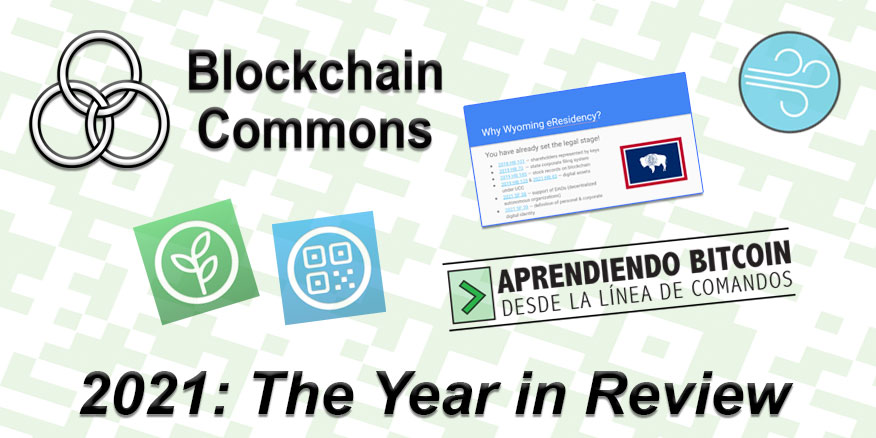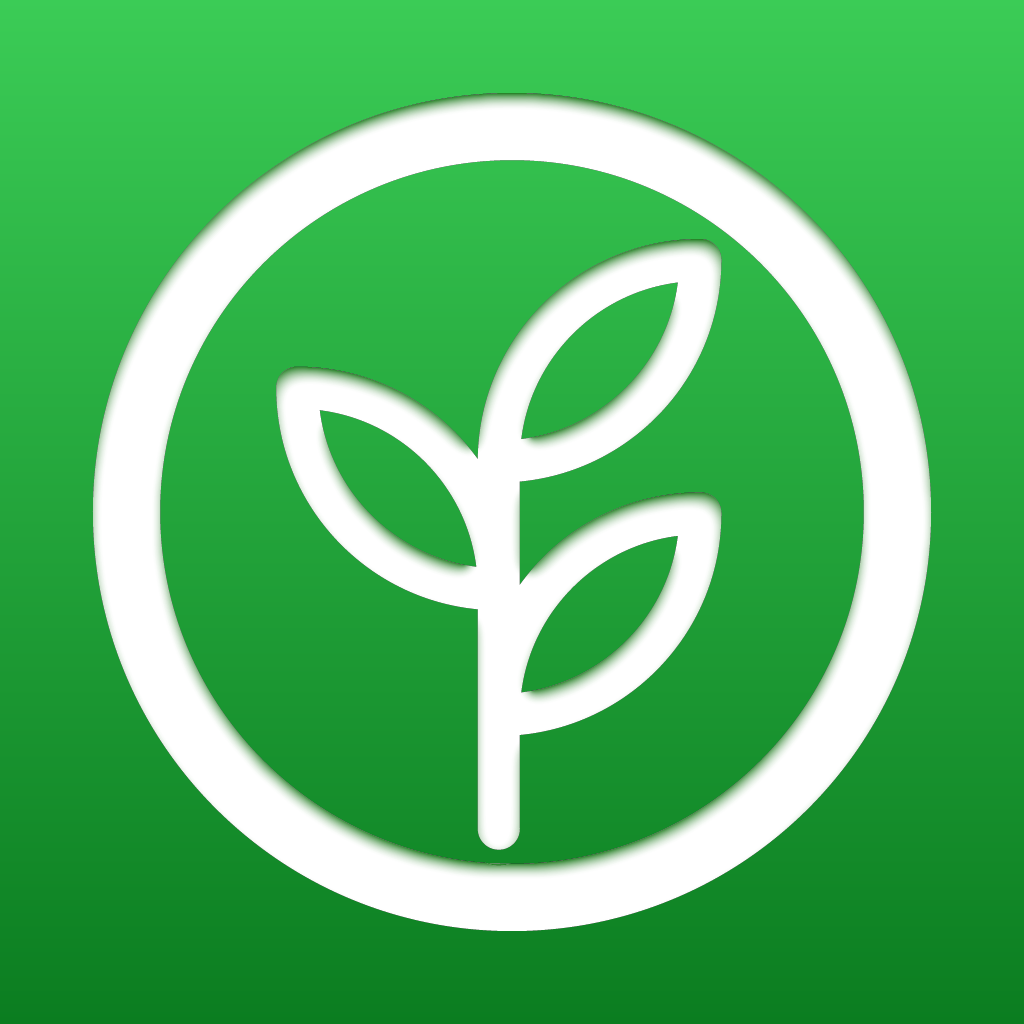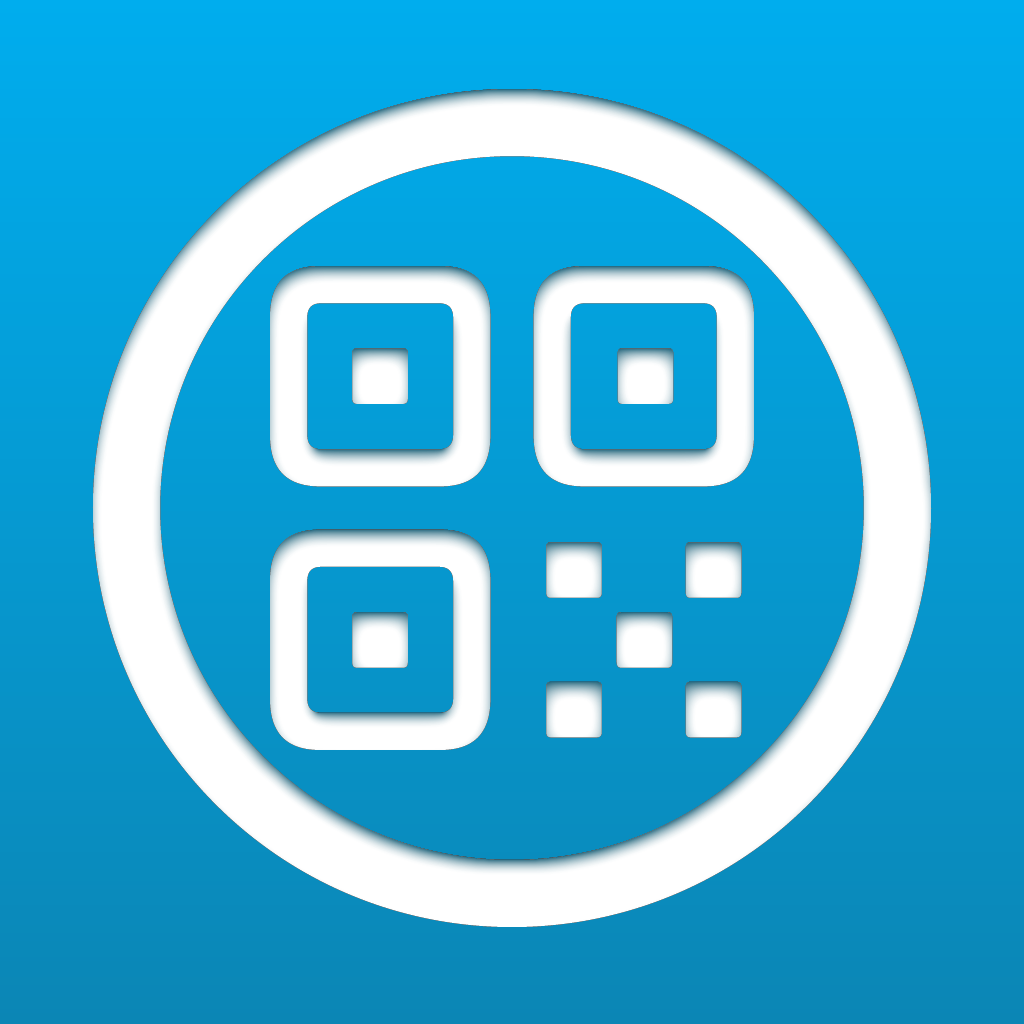Blockchain Commons 2021 Overview

|
Though Blockchain Commons initiatives date back to our 2016 foundation of Rebooting the Web of Trust and our 2017 work on Learning Bitcoin from the Command Line (initially funded through support from Blockstream), it’s only in 2020 and 2021 that Blockchain Commons has come into its own as a full member of the blockchain design community. We’re thrilled with the work we’ve been able to produce in the last two years, with many projects seeing great advancement in 2021.
Our Vision
One of the core things we did last year was to define our vision and objectives in a concrete form. Our vision is to advocate “for human dignity online by enabling people to control their own digital destiny.”
We feel that this is particularly critical following the increased focus on digital life during the pandemic, and what we hope will be an increase in human prosperity as we emerge from the COVID crisis. At this crossroads, we must choose to either trust governments to have total control over our digital self, or we must fight for our digital freedom. Obviously, we choose the latter path.
We are working toward our vision through the creation of infrastructure that is open, interoperable, secure, and compassionate. Four early objectives are intended to advance our vision in the next few years: the creation of a community of designers; the definition of a self-sovereign design architecture; the creation of demand for this architecture; and the welcoming of peers into our industry.
Architectural Overview
To date, our biggest focus has been on our architectural objective. We began with community discussions about the extant flaws in the blockchain ecosystem, particularly related to interoperability between different applications and services. That led us into the creation of specifications as well as the Gordian Principles, which outline our core desires for interoperable infrastructure.
This led to the development of reference libraries that followed our specifications & architecture objectives and then reference applications that used the libraries. The next step will be for these specifications (and libraries) to be deployed in physical products, which we’re just starting to see as 2021 comes to an end.
We generally see this as the model for Blockchain Commons development: we talk with the community, create a spec, and demonstrate how to use it, then the community creates applications.
So what did 2021 specifically bring for our architectural objective?
Our Specifications
Much of our original architectural work on specifications such as LifeHash, SSKR, and URs occurred in 2020, but in 2021 we made few major expansions: we produced v2.0 of LifeHash, to make it more compatible with grayscale screens; and we released our Request/Response design for URs, which we see as the interoperable end-goal of UR design.
With much of this base work done, we also increased our educational support for our specifications in 2021: our technology overview video overviews our work; while we also produced extensive docs for both SSKR and UR.
Our Reference Apps
Our next goal with our specifications is to bring them into practical usage by the blockchain ecosystem. Blockchain Commons trailblazes the way with reference apps that demonstrate both their usage and our libraries. Our most notable release in this regard for 2021 was Gordian Seed Tool, an app now available in the iOS and Mac App stores.
 Gordian Seed Tool demonstrates how to create an app based on the Gordian Principles of independence, privacy, resilience, and openness. It also shows best practices and UX for specifications such as LifeHash, UR, SSKR, and PSBTs with animated QRs. The app is a complete reference for the feature set that we’d love to see all airgapped hardware wallets supporting in the coming year.
Gordian Seed Tool demonstrates how to create an app based on the Gordian Principles of independence, privacy, resilience, and openness. It also shows best practices and UX for specifications such as LifeHash, UR, SSKR, and PSBTs with animated QRs. The app is a complete reference for the feature set that we’d love to see all airgapped hardware wallets supporting in the coming year.
 We also produced QR Tool, also for the Apple app store, which reveals how the Gordian Principles can be applied to the wider world of data storage.
We also produced QR Tool, also for the Apple app store, which reveals how the Gordian Principles can be applied to the wider world of data storage.
Finally, our Gordian Server platform saw its 1.0 release: this is the linchpin of our Gordian architecture, meant to demonstrate how users can maintain independent control of their digital destiny.
We look forward to more of this work appearing in the deployments of blockchain manufacturers, with some of the first releases of Blockchain Commons specifications already out from Foundation Devices, Keystone, and Sparrow, with more to come. We’ve already begun documentation on how shared use of these specifications creates a new world of interoperability.
Though our architectural work has been our biggest priority, we also did work on our two other major objectives: creating demand for our work and enlarging the blockchain community through education.
Creating Demand
Creating demand for open, interoperable, secure, and compassionate infrastucture came mainly through work with legislative bodies. We’ve worked with Wyoming for years, and were thrilled to see their first-in-the-country definition of digital identity go into effect in July 2021. It depends on the delegatable power of a Principal Authority, so we wrote about what that means for the future of digital identity. Because Wyoming is so far ahead of the rest of the country on digital matters, we’ve suggested they create an eResidency program, to bring these advantages to everyone.
Blockchain Commons also testified before other legislatures and lawmakers including ones in Nevada, North Dakota, Buenos Aires, and the Netherlands. We’re thrilled to be able to continue explaining the need for self-sovereign and compassionate digital infrastructure across the world.
Supporting Education
The flip side of creating demand is educating the next generation of blockchain developers. One of our prime thrusts in that direction has always been our Learning Bitcoin from the Command Line course, which we minorly updated to keep up-to-date with Bitcoin 20.0 as Learning Bitcoin 2.1.
 More importantly, we also released complete translation of Learning Bitcoin into Portuguese and Spanish. This was our first truly open-development project, initiated and entirely conducted by volunteers. We’re very grateful to these volunteers for managing the translations, as we think they’re critical in the continued design and development of blockchain technology internationally.
More importantly, we also released complete translation of Learning Bitcoin into Portuguese and Spanish. This was our first truly open-development project, initiated and entirely conducted by volunteers. We’re very grateful to these volunteers for managing the translations, as we think they’re critical in the continued design and development of blockchain technology internationally.
Our other long-term educational program at Blockchain Commons is SmartCustody: helping designers and users alike to increase the resiliency of their digital holdings. We feel that this is critical education because it allows people to take full andresponsible control over their digital assets and it helps them to avoid the most common losses, stemming from lack of knowledge and human error.
Though we’re still seeking funds for a v2.0 of our course, we have written a few articles that cover some of the technological methods that can improve the resilience of custody in the future, including multisigs, SSKR shares, and timelocks. Some of the material remains preliminary, but that’s because integration of the technology is exploratory as well. We look forward to more completely bringing this material into #SmartCustody in the future, as these technical tools are what we’ve always seen as the end-goal of #SmartCustody work.
Finally, we also repeated our internship program in 2021, and were thrilled to herald another coterie of new blockchain developers (and others interested in the field) into the industry.
Our Future
Looking forward, there’s lots to be done.
We’re hoping to see even more third-party projects bringing our specifications to market: not only hardware and software wallets, but also online services that leverage them. We’ll also be continuing to support our specifications with reference applications that can be used by developers to test their interoperability.
 Gordian Recovery is our next planned reference release: it’s intended to demonstrate how to recover funds even if a wallet manufacturer disappears, especially for the more complex situation of multisig recovery.
Gordian Recovery is our next planned reference release: it’s intended to demonstrate how to recover funds even if a wallet manufacturer disappears, especially for the more complex situation of multisig recovery.
More new initiatives will include investigations into Ethereum as another blockchain that could benefit from some of our infrastructural work and beginning to leverage Rust as a more fundamentally secure language for writing apps. Finally, we’re expecting to work with the recent Taproot soft-fork, and opportunities offered by its Schnorr signatures, as the biggest new advance in the Bitcoin ecosystem.
This coming year, we also hope to see the return of the Rebooting the Web of Trust design workshops, which incubated a lot of the ideas that have gone into Blockchain Commons. A second virtual salon is occurring this month, but the resumption of the full design workshops will of course be pandemic-dependent. In the meantime, we’re thrilled to see the continued development of RWOT’s ideas: we celebrated the five-year anniversary of self-sovereign identity with Coindesk and were also thrilled to contribute to the Self-Sovereign Identity book from Manning.
Our biggest challenge going forward is that we need Blockchain Commons to be more self-sufficient, which has proven a difficult nut to crack given the foundational nature of a lot of the work we’re doing. We’re very grateful to our GitHub sponsors; if you’re doing work that will ultimately benefit from some of the specification and interoperability work we’re doing, we encourage you to become a sponsor as well, to ensure we can keep doing that work. You can also show your support for our ideals with the self-sovereign NFTs that we’re hoping to roll out in 2022.
Thank you to everyone for the support and interest in Blockchain Commons to date, especially including the early adoptors of our specifications, our sustaining sponsors: Bitmark, Blockchainbird, CrossBar, Foundation Devices, HRF, Keystone, Unchained Capital, and our many [Github sponsors](https://github.com/sponsors/BlockchainCommons].